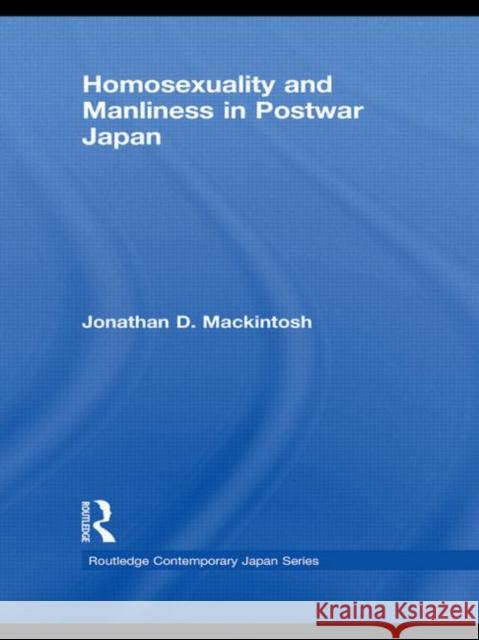Homosexuality and Manliness in Postwar Japan » książka
Homosexuality and Manliness in Postwar Japan
ISBN-13: 9780415421867 / Angielski / Twarda / 2009 / 272 str.
Homosexuality and Manliness in Postwar Japan
ISBN-13: 9780415421867 / Angielski / Twarda / 2009 / 272 str.
(netto: 698,25 VAT: 5%)
Najniższa cena z 30 dni: 705,23
ok. 22 dni roboczych.
Darmowa dostawa!
Japan's first professionally produced, commercially marketed and nationally distributed gay lifestyle magazine, Barazoku ('The Rose Tribes'), was launched in 1971. Publicly declaring the beauty and normality of homosexual desire, Barazoku electrified the male homosexual world whilst scandalising mainstream society, and sparked a vibrant period of activity that saw the establishment of an enduring Japanese media form, the homo magazine. Using a detailed account of the formative years of the homo magazine genre in the 1970s as the basis for a wider history of men, this book examines the relationship between male homosexuality and conceptions of manliness in postwar Japan. The book charts the development of notions of masculinity and homosexual identity across the postwar period, analysing key issues including public/private homosexualities, inter-racial desire, male-male sex, love and friendship; the masculine body; and manly identity. The book investigates the phenomenon of 'manly homosexuality', little treated in both masculinity and gay studies on Japan, arguing that desires and individual narratives were constructed within (and not necessarily outside of) the dominant narratives of the nation, manliness and Japanese culture. Overall, this book offers a wide-ranging appraisal of homosexuality and manliness in postwar Japan, that provokes insights into conceptions of Japanese masculinity in general.
Japan’s first professionally produced, commercially marketed and nationally distributed gay lifestyle magazine, Barazoku (‘The Rose Tribes’), was launched in 1971. Publicly declaring the beauty and normality of homosexual desire, Barazoku electrified the male homosexual world whilst scandalizing mainstream society. It also sparked a vibrant period of activity that saw the establishment of an enduring Japanese media form, the homo magazine.
This book examines the history of the relationship between male homosexuality and conceptions of manliness in post-war Japan. It provides a detailed account of the formative years of the homo magazine genre in the 1970s, and explores its evolution in subsequent years, analyzing key issues including homophobia; gay liberation; male-male sex, love and friendship; the masculine body; and manly identity. The author investigates the phenomenon of ‘manly homosexuality’, often neglected both in masculinity studies with its assumption of manliness as an exclusively heterosexual quality, and in gay studies with its focus on queer and transgressive gendered identities. Attempting to understand ‘manly homosexuality’ not as part of a conceptual ghetto, but instead situating gay men alongside their heterosexual counterparts to argue that their desires and individual narratives were constructed within, and not necessarily outside of, the dominant narratives of the nation, manliness and Japanese culture.











